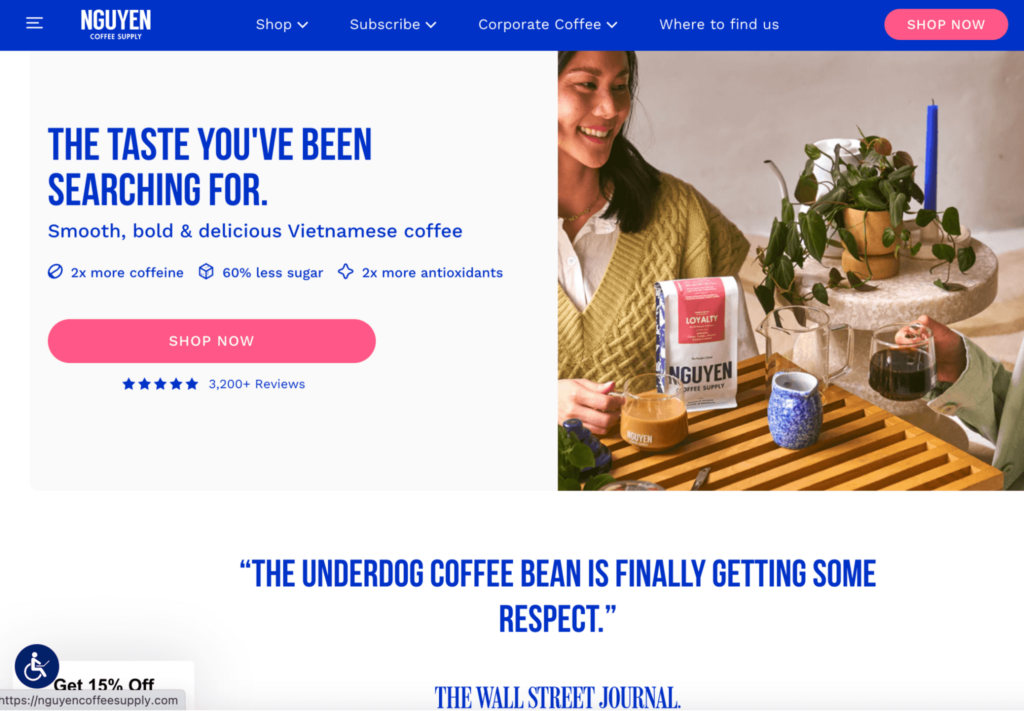As 2023 draws to a close, one might be tempted to ask: what pandemic?
And yet, even three years after the pandemic started to shake the world, people are still feeling the repercussions of this piece of history. Businesses are no exception to this rule.
While some ecommerce businesses boomed in 2021 as shoppers were forced to shop online and personal protective equipment (PPE) saw a dramatic surge, others were forced to open and close their doors for the last time. As restrictions eased, so too did the almost surreal efflux in commerce as the post-pandemic slowdown and other world events contributed to the highest inflation in 40 years, leading to mass layoffs and tighter budgets.
We are entering a new era of commerce hinging on several fronts, to name a few:
- A volatile economy
- The renaissance of human connection
- The advancement of technology
But there is hope yet for the aspiring entrepreneur to succeed with these insights in mind. In this blog post, we’ll explore some ways businesses can look to maximize their retail and ecommerce presence for success in this new age.
Key takeaways
- Data can anchor businesses during times of uncertainty.
- Omnichannel strategy is more about having a strong presence everywhere than it is about having a purchase option available everywhere.
- Businesses must learn new technologies to stay resilient.
Let your data be your anchor
This principle hasn’t changed much over the years, but how businesses are able to do it has certainly made leaps and bounds. This is part of a holistic understanding of who your customer is:
- Who they are
- What they care about and how they think
- Where they spend their time and where they shop
- When they think about about buying and when they actually buy
- And more
Data around your business is also crucial amidst rising costs around acquisition and supply. Managing profitability in today’s climate is all about the intersection between consumer data and budget. This can look like:
- Implementing a retention strategy like a subscription program to collect data on recurring purchases and increase customer lifetime value (LTV) to offset acquisition costs.
- Utilizing analytical dashboards that bucket your data into practical insights, like an inventory forecasting dashboard to ensure you are only buying as much as you need, based on what your customers are actually buying.
For example: a specialty coffee brand’s target market is the younger generation who are more conscious about the social and environmental impact of their purchase decisions, more likely to be on social platforms like Instagram and TikTok, and care more about health and wellness—so they tend to shop at stores like Whole Foods Markets.
Expanding into retail stores such as these can be a clever business decision for food and beverage brands to increase exposure and save on individual shipping costs associated with shipping heavier products like canned beverages. This, paired with a strong online presence, boosts brand awareness, confidence, and loyalty.
An omnichannel strategy isn’t just about adding-to-cart
Speaking of—Recharge brands like Nguyen Coffee Supply are leading the charge when it comes to showing up as a commerce brand that does online and in-store experiences. We say experiences and not just “shopping” intentionally. Where Nguyen Coffee Supply has been hitting hard is in how their target audience encounters their brand, not just shops with them.
With a strong online presence on Instagram, LinkedIn, YouTube, Amazon, and features in Wall Street Journal, the New York Times, Forbes, and CNN, Nguyen Coffee Supply has been sure to put the “omni” in “omnichannel”. And we didn’t even mention their expansion into 280 North American Whole Foods Market stores yet.

Other business owners can take note of how an omnichannel strategy doesn’t just mean making it easy for your customers to “add-to-cart.” With Nguyen Coffee Supply’s unified messaging across all platforms, it establishes the brand as trustworthy, innovative, and worth the buy.
The takeaway? Make the product and its value proposition easily accessible to your target market. Customers know when they buy from Nguyen Coffee Supply, they’re also supporting founder Sahra Nguyen’s mission of destigmatizing the use of robusta beans and increasing diversity in the coffee industry by elevating her home roots in Vietnam. Today’s consumers care a lot more about where they buy from and the consequences of supporting one brand over another.
Don’t shy away from technology
With the advancement of technology in areas such as artificial intelligence and augmented reality, businesses need to learn how to leverage the novelty to stay resilient in the face of volatility.
Brands like Pat McGrath Labs demonstrate how they’ve begun weaving new technology into their omnichannel strategy, showcasing an augmented reality experience in partnership with Google to allow customers to try on different makeup products and shades in their most recent New York pop-up event. This campaign reach was amplified through strategic collaboration with content creators like Monet McMichael, whose target audience is all about authenticity and diversity. A clever move, as Stephanie Horton, senior director of commerce marketing at Google, emphasizes:
“AR is an incredibly helpful technology for online beauty shoppers of all skin tones and ethnicities because it allows them to envision what a beauty shade looks like on them, or on a model who resonates with them, all before they buy.”
Stephanie Horton, Senior Director of Commerce Marketing, Google
What does this mean for other brand owners? As Marie Curie, physicist & chemist, said: “Nothing in life is to be feared. It is only to be understood.”
Brush up on what new tools and features have been made available by the advancements of technology and see how they can present new ways of achieving your goals.
The light at the end of the tunnel
The world of commerce continues to charge ahead with a heavy sigh from the weight of the last few years. Although what that looks like has changed for many, businesses can find optimism in the resilience of the world that continues to push forward and adjust their business decisions to match where consumers stand today.
Sources
[1] Premier Data: The State of PPE Supply One Year into COVID-19 (Blog)
[2] Russia-Ukraine conflict could lead to global e-commerce disruptions (News article)
[3] Lifetime Value (Glossary)
[4] Merchant Analytics: Get deeper insights into your programs with next-generation analytics (Roadmap)
[5] How to reach Gen Z with your DTC content (Blog)
[6] Nguyen Coffee Supply launches RTD range at 280 North American Whole Foods Market stores (News article)
[7] Pat McGrath Labs, Google partner on AR beauty pop-up in NYC (News article )



